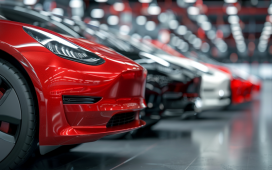Formula 1 chiefs have been urged to ramp up analysis about the true impact of new rules for 2026, amid fears from some teams they could spawn “Frankenstein cars”.
As F1 gears up for an overhaul of both the power unit and chassis regulations, concerns have emerged about the potential for a negative impact on the spectacle if elements of the new package do not work as hoped.
Motorsport.com has learned that at the regular team principals’ meeting at the Canadian Grand Prix with F1 CEO Stefano Domenicali, fresh fears were raised specifically about the power unit rules that are already in place.
It is understood that Red Bull team boss Christian Horner, who has mentioned the issue before in F1 Commission meetings, even questioned whether or not F1 needs a rethink over plans for a 50/50 split of power generation from the internal combustion engine and the battery.
Instead, it has been suggested, consideration should be made to try to shift things away towards so much reliance on the electrical element to help avoid any risk of trouble.
Straightline concerns
Early analysis conducted by teams has triggered worries that there could be a risk of cars running out of battery power at some tracks because the electrical systems cannot regenerate enough energy from the MGU-K.
Should this occur then it could open up the potential for some bizarre behaviour from drivers to try to generate more energy on the entry to corners.
They could also experience a sudden loss of speed on the straights.
One source even suggested that if the rules do not deliver enough electric power for the entire lap, then, when drivers lose the 350kW boost (equivalent to 470hp) that is allowed from the batteries, they could even be forced to change down gears on the straight.
One team boss said: “This needs a lot of detailed analysis because if we get it wrong then it will not be good for the spectacle. We could have drivers left on economy drives to look after their batteries, or having to change down gears on the straights.
Sergio Perez, Red Bull Racing
Photo by: Red Bull Content Pool
“We have to make sure we don’t end up creating some Frankenstein cars that are not what was originally intended with the regulations.”
The worries have been fuelled further by teams not yet knowing the potential drag profiles of the 2026 cars, which are set to feature active aerodynamics to flatten wings on the straights.
If the drag levels do not come down to the right level, then that could increase the risk of cars not having enough battery power.
Another boss added: “We just want a better understanding of the impact of the changes, because we don’t want a situation where drivers are suddenly slowing down halfway down the straights.
“If there are any problems, then we need to head them off now, because if we wait until the rules are finalised then it could be too late.”
Sources have indicated that a number of teams want the FIA to ramp up its analysis of the impact of the regulations, to provide a clearer picture about what can be expected for 2026.
Teams especially want to better understand the behaviour characteristics of the future power units around every circuit.
This relates not just to overall lap time, with the target being for cars to be not too dissimilar to current performance levels, but also how and where that power is produced throughout the lap.
While simulations have indicated that the new engines will operate without issue at circuits that are good for power regeneration, there is no guarantee their performance profile will suit every track.
FIA committed to 2026 changes
The concerns about the engine situation come as the FIA continues to work on the chassis regulations, which are required to shift towards active aero because the change of power characteristics from the engines requires a dramatic reduction in drag for the straights.
The FIA has made clear that it is fully committed to the change of regulations for 2026, and was confident that F1 would continue to deliver a great spectacle.
Max Verstappen, Red Bull Racing RB19 at the start
Photo by: Red Bull Content Pool
It is understood that work is ongoing to finalise the outline car concept, and no major areas of concern have emerged yet during its investigations.
An FIA spokesman told Motorsport.com: “The power unit regulations for 2026 onwards have been clearly defined and approved in line with the main objectives of the FIA and Formula 1 to remain a global leader in the development of new technologies that will drive a more environmentally sustainable future while providing an exciting sporting spectacle.
“We are working on a complete package that will allow the cars to run at comparable speeds to what we see today whilst being much more efficient.
“And naturally, the meritocratic nature of Formula 1 will mean that the teams and power unit manufacturers will be working on their own innovations to extract the crucial final performance potential from their designs.”










